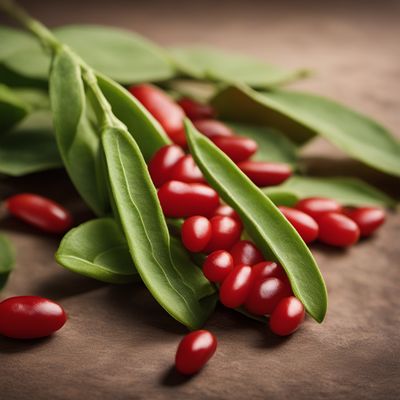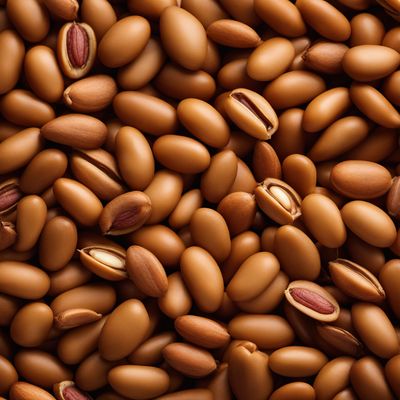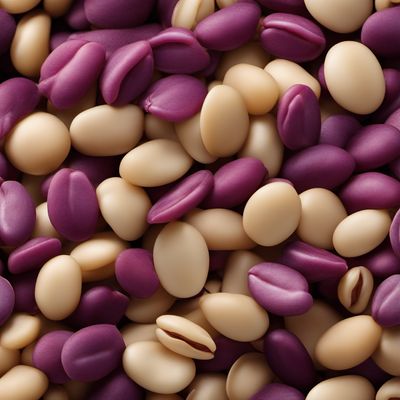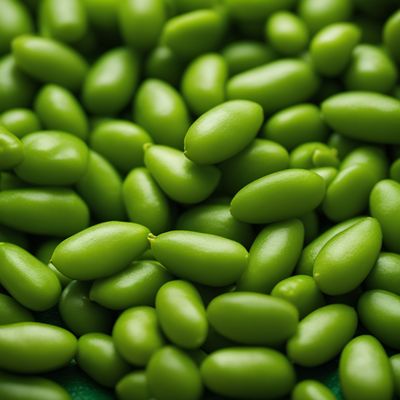
Ingredient
Broad beans (without pods)
The Versatile Legume
Broad beans are large, flat legumes with a creamy texture and a slightly nutty flavor. They are commonly used in Mediterranean and Middle Eastern cuisines, where they are enjoyed in salads, stews, dips, and purees. Broad beans can be cooked and eaten whole or peeled to reveal their tender, bright green inner beans.
Origins and history
Broad beans have a long history, dating back to ancient times. They were cultivated in ancient Egypt and have been a staple in Mediterranean and Middle Eastern cuisines for centuries. Broad beans are also associated with symbolism and traditions in various cultures, such as being considered lucky in some countries.
Nutritional information
Broad beans are a good source of protein, fiber, and essential minerals like folate, iron, and manganese. They are also low in fat and calories, making them a nutritious addition to meals.
How to select
Choose broad beans that are plump, firm, and free from blemishes. Avoid beans that are discolored or have shriveled skins. If purchasing pre-packaged beans, ensure that the packaging is intact and the beans are not damaged.
Storage recommendations
To store broad beans, keep them in a perforated plastic bag in the refrigerator. They can be stored for up to a week. If the beans have been shelled, store them in an airtight container in the refrigerator and use within a few days.
How to produce
Broad beans can be grown in home gardens by sowing seeds in well-drained soil and providing adequate sunlight and water. They are relatively easy to grow and can be harvested when the pods are fully matured.
Preparation tips
Broad beans can be boiled, steamed, or sautéed. When using whole beans, blanch them in boiling water for a few minutes, then remove the outer skin to reveal the tender inner beans. Broad beans can be enjoyed on their own as a side dish, added to salads, or used in dips and spreads. They also pair well with ingredients like garlic, lemon, mint, and olive oil.
Substitutions
Lima beans, edamame, or green peas can be used as substitutes for broad beans. However, keep in mind that the flavor and texture may differ slightly.
Culinary uses
Broad beans are commonly used in Mediterranean and Middle Eastern cuisines. They are often added to salads, stews, soups, and dips like hummus. In Italian cuisine, they are a key ingredient in dishes like pasta e fagioli and fava bean puree. Broad beans can also be mashed and spread on toast or used as a filling for savory pastries.
Availability
Commonly available in Mediterranean countries, Middle Eastern countries, and parts of Asia.
More ingredients from this category » Browse all

Mung beans (without pods)
The Mighty Mung: Unlocking the Power of Mung Beans

Stink beans (without pods)
The Pungent Delicacy: Stink Beans Unleashed

Runner beans (without pods)
The Vibrant Green Delight: Unveiling the World of Runner Beans

Jack beans (without pods)
The Versatile Legume: Unveiling the Wonders of Jack Beans

Tepary bean (fresh seeds)
The Resilient Legume

Black eyed peas (without pods)
The Versatile Legume: Black Eyed Peas

Azuki beans (without pods)
The Versatile Azuki Beans

Rice beans (without pods)
The Versatile Rice Bean

Monantha vetches (without pods)
The Versatile Monantha Vetches

Lablab beans (without pods)
The Protein Powerhouse

Mat bean (fresh seeds)
The Mighty Mat Bean: A Nutritional Powerhouse

Soyabeans (without pods)
The Mighty Bean: Unleashing the Power of Soyabeans